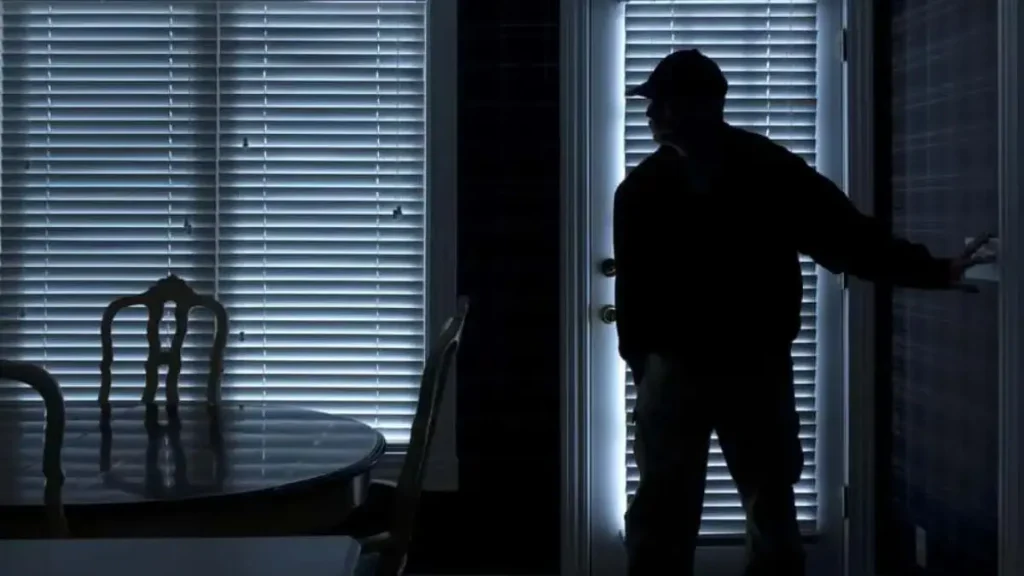60-Year-Old Suspect Arrested in Connection Illinois Home Invasion
I still can’t stop thinking about how easily someone can be tricked inside their own home. In Urbana, Illinois, a 60-year-old man named Michael Willis convinced a resident to let him in by pretending to be a maintenance worker. It sounds like something out of a movie, but this was very real—and it happened just after 2 p.m. on a Tuesday along South Cottage Grove Avenue.
Once inside, Willis tried to use force to steal money from the unsuspecting homeowner. What struck me most was how quickly the situation could have turned dangerous. Thankfully, the resident stayed calm and found a way to escape, calling the police immediately. Urbana officers responded swiftly, and within an hour, Willis was apprehended nearby.
Reading about this, I realized how easily these “social engineering” tactics can catch anyone off guard. It’s a chilling reminder that even familiar neighborhoods aren’t automatically safe, and that vigilance matters more than we often give it credit for.
Understanding Home Invasion in Illinois

When I first read about Michael Willis’s arrest on WAND-TV, I realized most people—including myself—don’t fully understand what “home invasion” legally means in Illinois. It’s not just burglary or theft; the law treats it as a serious offense because it involves entering someone’s home while they are present, often with force or the threat of force.
Home invasion charges carry heavier penalties than typical theft. Depending on the circumstances, someone convicted can face years in prison, fines, and long-term criminal records. Comparing this to ordinary burglary, the key difference is the presence and risk to the victim.
As seen in York City, Illinois, arrests in home invasion cases often happen quickly when victims report incidents promptly, reinforcing the importance of swift action.
That’s why law enforcement takes these cases very seriously—and why this Urbana incident escalated quickly once the victim called the police.
The Psychology Behind the Crime
What amazes me—and worries me—is how criminals exploit basic human trust. Michael Willis tricked the victim by claiming to be a maintenance worker. It’s a classic example of social engineering: appearing legitimate to gain access.
Criminals often use this tactic because it works. Most of us are polite, we answer the door, we assume people are who they say they are. The problem is, one wrong assumption can turn dangerous.
Reading about this, I couldn’t help thinking about how I might react if someone unexpected knocked on my door claiming to work for a utility company or local service.
Practical takeaway: Always verify anyone who asks to enter your home, even if they look official. Ask for ID, call their company, or reschedule the visit.
Victim’s Perspective: A Narrow Escape
Imagine the fear of realizing the person in your home isn’t who they claimed to be. The victim in Urbana acted quickly, staying calm under pressure, and managed to escape and call 911. I kept thinking about how small decisions in those moments—staying calm, creating distance, looking for exits—can save lives.
But the impact isn’t just physical. The emotional toll of being confronted in your own home can last far longer than the incident itself. Anxiety, sleepless nights, and second-guessing daily routines are common reactions.
Sharing this story makes me appreciate the courage it takes to report these crimes and move forward.
For real-time updates on local home invasions and community safety alerts, you can also join a dedicated WhatsApp channel sharing verified crime reports and tips.
Law Enforcement Response: Swift Action by Urbana Police
I was impressed by how quickly the Urbana Police Department acted. According to their official Facebook post, officers arrived promptly after the victim called 911 and arrested Michael Willis about an hour later.
This shows not only their efficiency but also the importance of reporting suspicious activity immediately.
The police also used community awareness to locate the suspect. It’s a reminder that safety isn’t just about locks and alarms—it’s also about communication between residents and local law enforcement.
Cases like the Opelika home invasion, where multiple suspects were taken into custody, show how the legal process can involve multiple layers of investigation and prosecution.
Home Security Tips: Preventing Similar Incidents
Reading about this case made me think about practical steps everyone can take. Here’s what I would personally do if I lived in Urbana—or anywhere else:
- Verify identities before letting anyone inside. Don’t feel pressured to be polite at the expense of safety.
- Install security cameras or smart doorbells. They don’t just record evidence—they act as a deterrent.
- Consider neighborhood watch or community groups. Sharing information helps everyone stay alert.
These steps aren’t complicated, but they can make a huge difference. What struck me most is that criminals rely on small mistakes, like trusting someone too quickly or leaving doors unlocked. Every precaution you take makes it harder for them to succeed.
Legal Proceedings Ahead for Michael Willis
Reading about Michael Willis, I couldn’t help but wonder what happens next in the legal system. In Illinois, home invasion is a serious charge. Willis could face multiple years in prison if convicted, especially since the crime involved attempting to use force to steal money.
While every case is unique, understanding the process helps you see how the justice system works to protect victims and deter repeat offenders.
From arrest to arraignment and eventual trial, the courts will consider evidence, witness statements, and Willis’s criminal history. The outcome can include incarceration, fines, and long-term criminal records.
Practical takeaway: Stay informed about local crime cases—sometimes knowing how the system responds can help you understand community safety better.
Statewide Trends: Home Invasions in Illinois

This Urbana incident isn’t an isolated event. Home invasions have been steadily rising in certain areas of Illinois. Recent reports show that criminals often target unsuspecting homeowners, using deception and force.
Comparing statewide statistics to national trends reveals that while the overall numbers are moderate, certain neighborhoods experience repeated incidents.
Factors contributing to this include older populations, scams targeting trust, and criminals exploiting the perceived safety of residential areas. Understanding these patterns helps you see the bigger picture—it’s not just about one home or one suspect; it’s about trends that affect everyone.
Incidents like this aren’t isolated—similar events have occurred in places like Humboldt Park, where a home invasion escalated into a shooting, highlighting the unpredictable danger of such crimes.
Preventive Takeaways for Readers
After going through the details of this home invasion, I want to leave you with practical steps that can make a real difference.
- Verify before you open the door: Ask for ID, call the company, or schedule a later visit.
- Invest in visible security measures: Cameras, smart locks, alarms—they make criminals think twice.
- Stay connected: Neighborhood watch groups or local social media alerts help everyone stay informed.
- Trust your instincts: If something feels off, step back and call authorities.
Reading about the Urbana case reminded me that safety is a combination of vigilance, preparation, and quick action. I keep asking myself: if it were my home, would I know exactly what to do? And I think that’s a question everyone should ask themselves.
How prepared are you to handle a stranger trying to gain access to your home? Share your thoughts or steps you’ve taken in your community to stay safe—I’d love to hear them.
If you want to read more real-life cases and safety strategies, check out our Home Security category for tips and recent incidents.
Disclaimer: The information in this article is based on publicly available sources and Urbana Police Department updates. It is intended for educational and informational purposes only. Readers should not consider it legal advice and should consult authorities for specific guidance.


